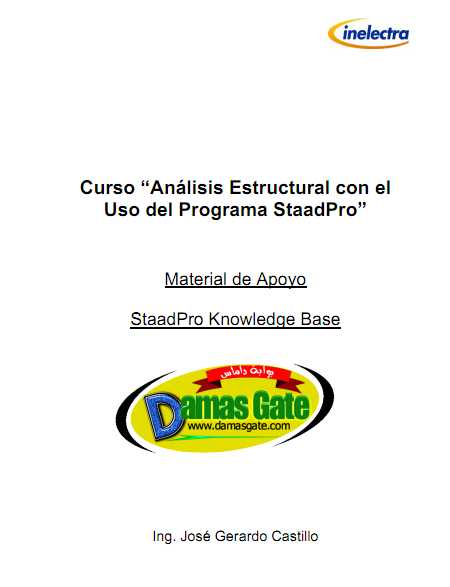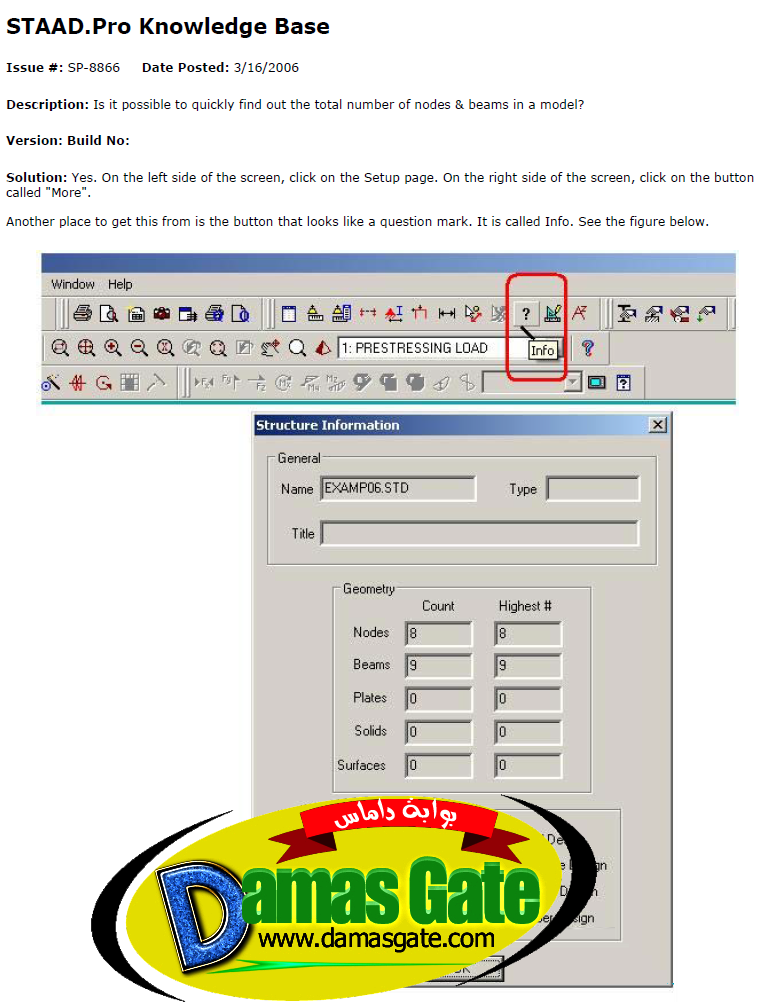STAAD.Pro Knowledge Base
STAAD.Pro Knowledge Base
Issue #: SP-2629 Date Posted: 6/13/2002
Description: What are the meanings of the different parameters used in the STAAD.Pro UBC analysis and how do we use them in a practical situation ?How is the base shear calculated and applied? Is the UBC load applied as a joint load ?
Version: ALL Build No: ALL
Solution: The base shear calculated in STAAD from a properly defined UBC 97 loading is redistributed at each floor using the rules laid down in clause 1630.5 of the subject code. In STAAD, the UBC load is not interpreted as joint loads. The method of calculation, in brief, can be explained as follows: a) While defining the UBC load, the user specifies the the different co-efficients to calculate the base shear.


The total inertia of the structure due to its selfweight and external loading on the joints & members are lumped at the joints. It is used to calculate the factor W required to arrive at the value of the base shear. b)The time period of the structure is calculated based on clause 1630.2.2.1(Method A) and 1630.2.2.2(Method B). The user may optionally provide a value of CT to calculate the time period by method A.
The user may also override the period calculated by the progrom via Method B by specifying a value for PX or PZ depending on the direction of the UBC load. c) The governing time period of the structure is chosen from the two periods (calculated in (b) above) on the basis of the guidance provided in clause 1630.2.2.2. d) The numerical coefficient for lateral load (R) should be selected properly by the user to account for the effect of the contribution of panel zone deformations to over all story drift for steel moment frame systems (UBC-97, Volume #2: Section:1630.1.2(2)) . e) In table 16-I the seismic zone factor is tabulated.The importance factor is provided by Table 16-K. In STAAD, the STYP values 1 to 5 refer to the soil profile types Sa to Se as given in Table 16-J. Soil profile type Sf is not supported by STAAD.The seismic source type is tabulated in the Table 16-U.The factors Na & Nv are tabulated in Tables 16-S and 16-T.
The zone factor, importance factor,soil profile type,Na and Nv must be input by the user as the UBC-97 parameters. Based on the above parameters(except the importance factor, which is directly used) the coefficients Ca and Cv are found out by STAAD from Tables 16-Q and 16-R . f) The design base shear is then calculated by equation 30-4 of clause 1630.2.1 and it is checked with equations 30-5,30-6 and, if applicable, with equation 30-7. g) If the ACCIDENTAL option is specified, the program calculates the additional torsional moments where the lever arm for calculation is 5% of the building dimension at each floor level perpendicular to the direction of the UBC load(clause 1630.6). h) The design base shear is distributed at each floor via clause 1630.5. The average lateral displacement of all joints at each vertical level of the structure can be printed through the command PRINT STORY DRIFT. i) The nodal displacements are then calculated. The forces/moments are then subsequently calculated.
Download
http://s18.alxa.net/s18/srvs2/02/002...edge-base2.rar